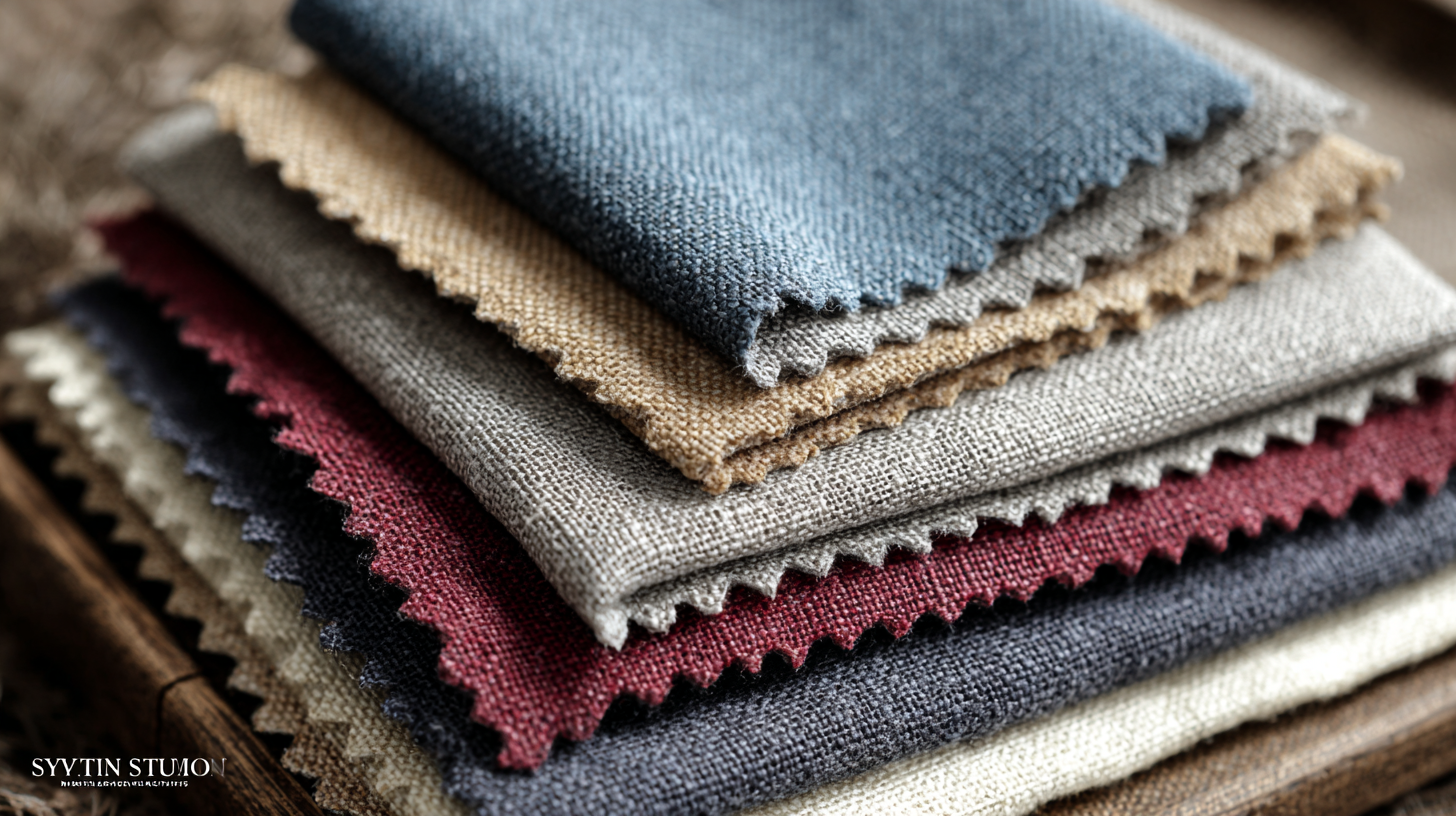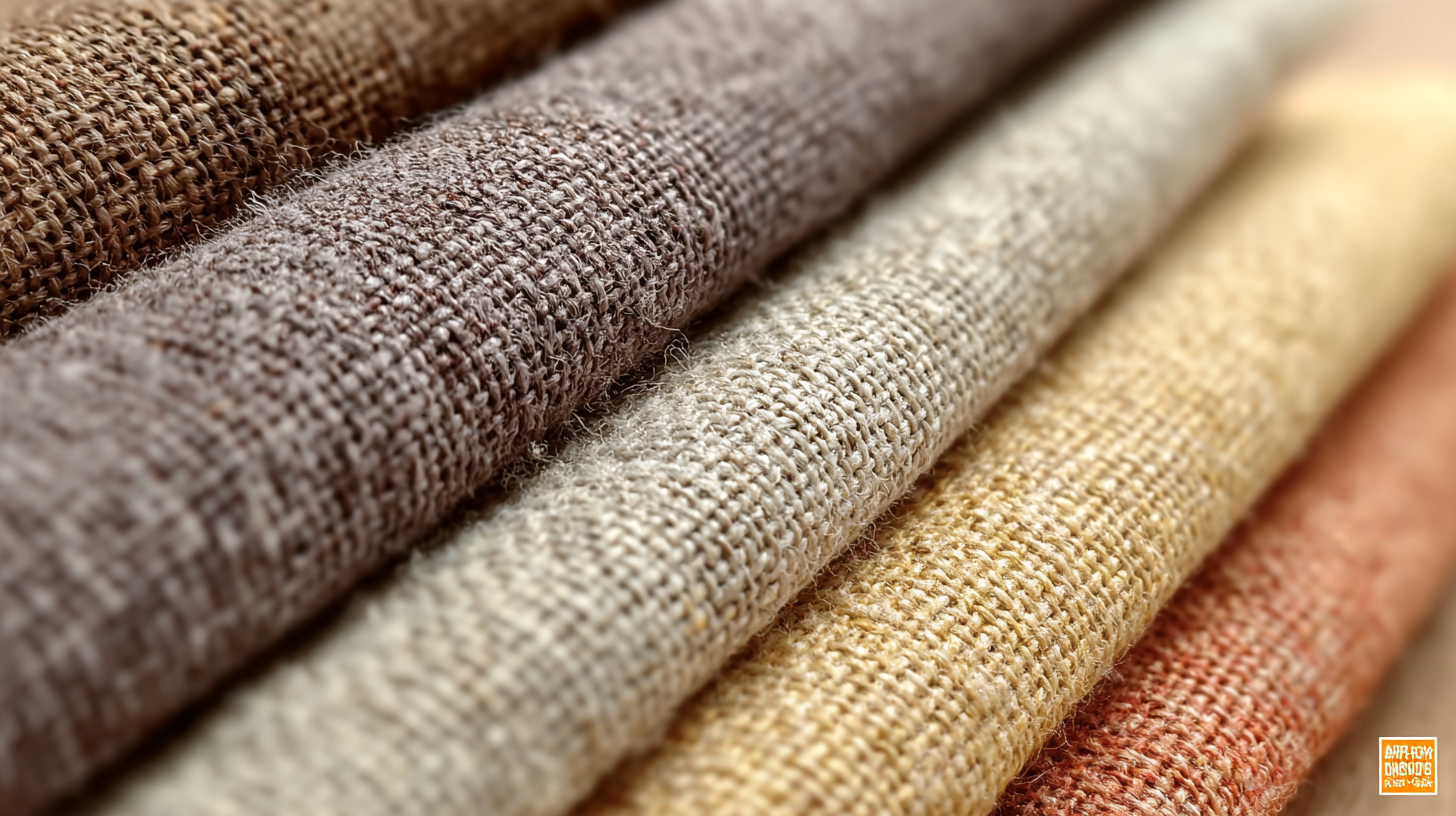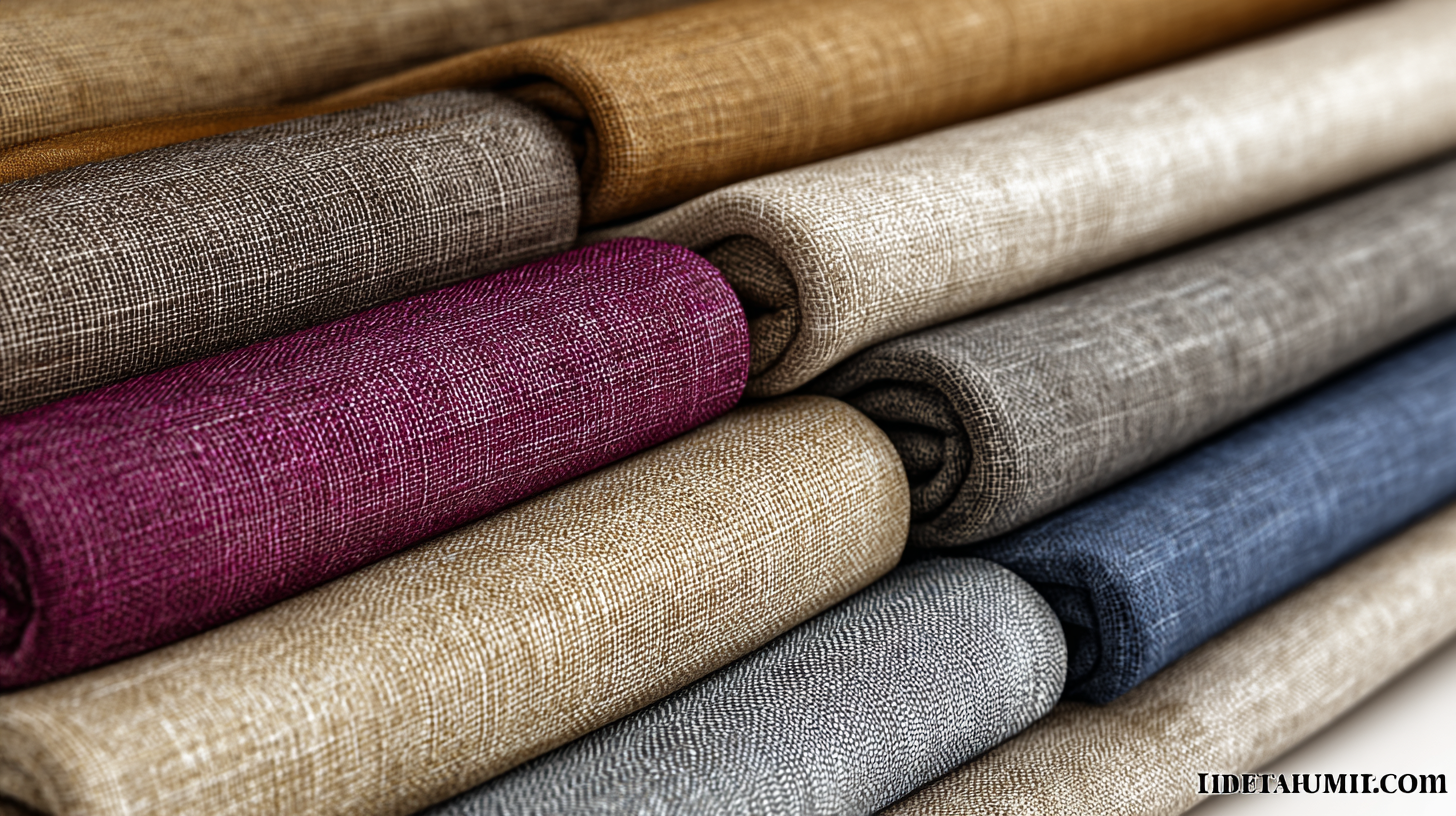When it comes to home décor, choosing the right materials can significantly impact the overall aesthetics and comfort of your living space. One versatile option that has gained popularity among homeowners and interior designers alike is Imitation Linen Fabric. This fabric perfectly combines the elegant look of natural linen with added durability and affordability, making it an ideal choice for a range of applications from upholstery to curtains. However, with various types and qualities available on the market, selecting the best Imitation Linen Fabric for your specific needs can be a daunting task. In this ultimate guide, we will explore key factors to consider, including texture, color options, maintenance, and sustainability, ensuring that you can make informed decisions and create a beautifully styled home environment that reflects your personal taste.

When choosing the best imitation linen fabric for your home décor, understanding its characteristics is essential. Imitation linen is known for its texture, durability, and versatility, making it a popular choice for various applications in interior design. Unlike natural linen, imitation variants can provide a similar aesthetic at a more accessible price point, and often with lower care requirements. When selecting the right fabric, consider attributes such as the weave, weight, and color retention, as these factors will influence both appearance and longevity.

Recent advancements in textile technology, particularly through nanotechnology, have revolutionized our understanding of fabric characteristics. Innovations in smart textiles have introduced functionalities that go beyond aesthetics—think moisture-wicking properties or stain resistance. This focus on performance allows imitation linen to not only replicate the look of traditional fabrics but also to incorporate these advanced features, enhancing the overall usability in everyday home décor. As sustainability becomes increasingly important, selecting imitation linen that utilizes eco-friendly production methods can also align your design choices with a more responsible approach to decorating your home.
When evaluating the quality of imitation linen fabric for your home décor, several key factors should be considered. First and foremost, the blending materials play a crucial role in determining the fabric's aesthetic and functional properties. According to a report by the Textile Institute, high-quality imitation linen typically incorporates a blend of polyester and cotton in a 70/30 ratio, which not only enhances durability but also mimics the natural texture and breathability of real linen. This combination provides a soft feel while maintaining the fabric’s strength against wear and wrinkles, making it an ideal choice for upholstery and drapery.
Moreover, the weight of the fabric is essential in assessing its quality. Light-weight imitation linen may be suitable for some applications, but for items like curtains or cushions, a heavier fabric—around 200 to 250 GSM (grams per square meter)—is recommended for a more luxurious appearance and better draping. The American Fabric Association highlights that the GSM metric is a reliable indicator of the fabric's thickness and overall quality. Therefore, when choosing imitation linen, look for options that offer a suitable balance of texture, weight, and material blend to ensure that your home décor not only looks good but also stands the test of time.
| Quality Factor | Description | Evaluation Criteria |
|---|---|---|
| Fabric Weight | The weight of the fabric that affects the drape and sturdiness. | Measured in grams per square meter (GSM); ideal weight is between 150-250 GSM. |
| Texture | The tactile feel of the fabric; should mimic natural linen. | Soft to touch, yet with a slight roughness typical of linen. |
| Color Fastness | The ability of the fabric to retain its color over time. | Tested through wash and light exposure; should not fade significantly. |
| Breathability | The fabric's ability to allow air circulation, affecting comfort. | Higher rating for fabrics that wick moisture and allow airflow. |
| Durability | Resistance to wear and tear over time. | Test for abrasion resistance; should withstand regular use and washing. |
| Environmental Impact | Consideration of the fabric's ecological footprint. | Look for certification like Oeko-Tex; assess production processes. |
When selecting imitation linen fabric for your home décor, color and texture play a pivotal role in creating the desired aesthetic for your space. Imitation linen comes in a variety of hues, from soft pastels to striking bold tones. Consider the overall color palette of your room. If your space is dominated by neutral shades, adding a pop of color with your fabric choice can create a vibrant focal point. Conversely, if your décor features rich colors, opting for more subdued, earthy tones can help maintain a harmonious atmosphere.
Texture is equally crucial in enhancing the visual appeal of your décor. Imitation linen fabric mimics the soft, natural feel of real linen, but it can also come with varying finishes—smooth, slightly rough, or with a sheen. The texture you choose should align with the functionality of the space. For a cozy living room, selecting a soft, textured fabric can invite warmth and comfort, whereas a sleek, polished imitation linen may be more suited for contemporary dining areas, lending a sophisticated touch. Balancing these elements will help you create an inviting and aesthetically pleasing environment.
 When it comes to maintaining imitation linen fabrics, understanding their unique qualities is essential for ensuring longevity and performance. One of the primary advantages of imitation linen is its durability. To keep your fabric looking fresh, it's important to handle it with care during laundry. Always check the label for specific washing instructions, but generally, cold or lukewarm water is recommended to avoid shrinking or fading.
When it comes to maintaining imitation linen fabrics, understanding their unique qualities is essential for ensuring longevity and performance. One of the primary advantages of imitation linen is its durability. To keep your fabric looking fresh, it's important to handle it with care during laundry. Always check the label for specific washing instructions, but generally, cold or lukewarm water is recommended to avoid shrinking or fading.
Tip: Use a gentle detergent designed for delicate fabrics to preserve the color and texture of your imitation linen. Additionally, consider air-drying instead of machine drying to minimize wear and tear.
Another key to preserving your imitation linen is protective measures against stains and spills. Unlike natural linen, imitation fabrics can be more resistant to staining, but prompt action is still important. Blot any spills immediately with a soft cloth rather than rubbing, which can spread the stain further.
Tip: To enhance stain resistance, look for imitation linen fabrics treated with a stain-repellent finish. Regularly vacuum or shake out your fabric items to help prevent dust accumulation and maintain their appearance over time. By following these simple care tips, your imitation linen can remain a beautiful and functional part of your home décor for years to come.
When selecting imitation linen fabric for your home décor, understanding the sizing and application is crucial for achieving optimal results. According to recent studies, the right fabric choice can enhance the aesthetic appeal of a room while ensuring practicality. For example, when outfitting a small living room, experts recommend choosing fabrics that not only complement the space but also visually elongate it. Opt for lighter colors and subtle patterns to create an illusion of spaciousness, as darker tones may absorb light, making the area feel more cramped.
In addition to color, the size of the fabric matters significantly. A common guideline is to maintain proportionality to your furniture; for instance, if using fabric for throw pillows or curtains, ensure that the length and width follow the rule of two-thirds relative to the furniture size. This principle helps in maintaining balance within the room. For a compact bathroom, lightweight imitation linen can offer both style and easy maintenance, allowing for eye-catching patterns while enhancing functionality. By carefully considering these aspects, you can elevate your home décor to not only look stylish but also feel inviting.
